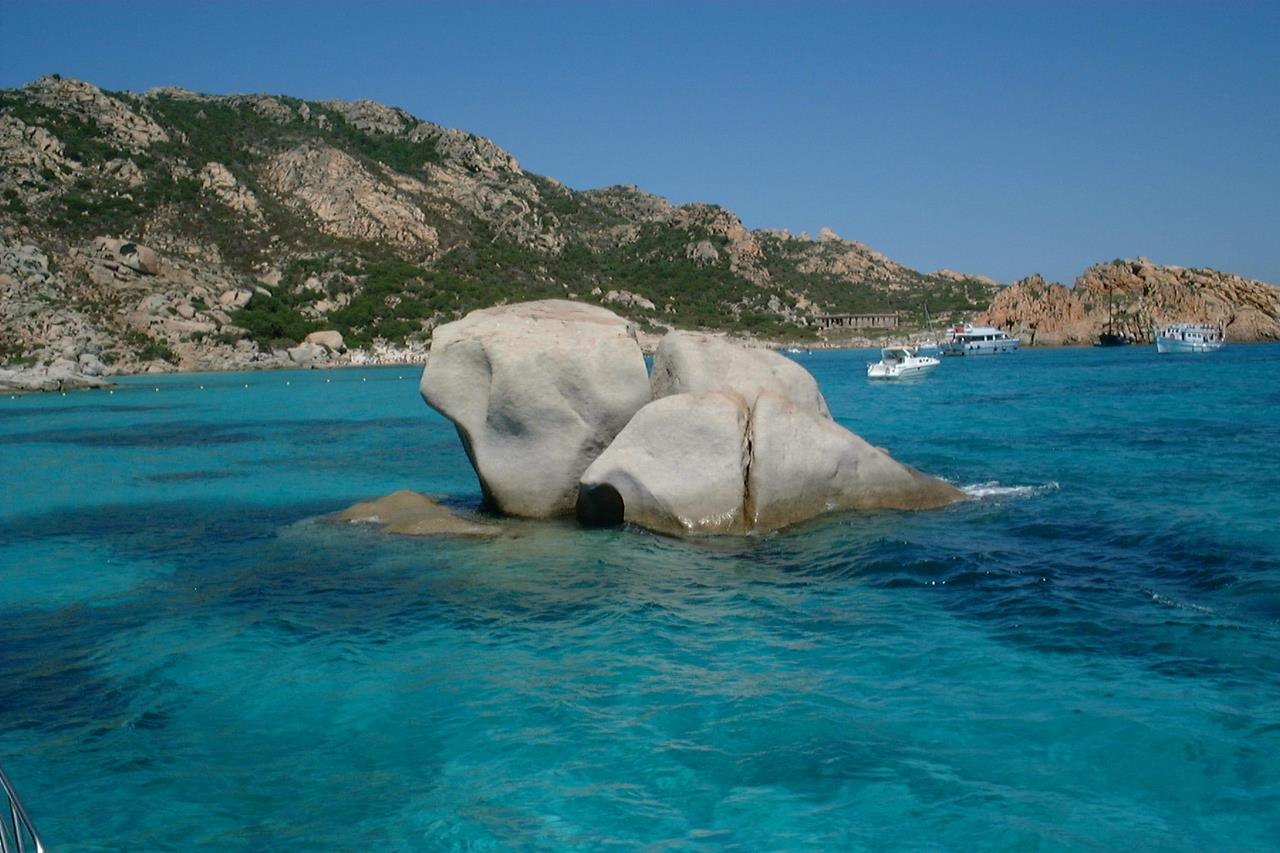
The city of Olbia is in the northeastern coast of Sardinia, in the most inner part of the homonymous gulf, in front of the little island of Tavolara. It is one of the most important port and airport call in Sardinia.
History
Despite its Greek name, Olbia's origins are probably Carthaginian (V century b.C.). During the Latin domination it was an important trading centre, as you can see from the thermal baths, the aqueduct and some big public buildings. It was also connected to other important centres like Cagliari and Porto Torres by some consular roads. At that time, Olbia was the harbour where the Roman ships used to dock and leave for Rome's wheat supply. After Rome's fall, it rose again in the XI century, thanks to the cities of Pisa and Genova, it became the chief town of Giudicato di Gallura, and it had the jurisdiction of a quite large area. After the fall of the Giudicato, Olbia took the name of Terranova and became a free municipality. During the Spanish administration there was a fast decline, because of malaria, the plague, a long famine and the barbarian invasions. When Sardinia passed in Savoia's hands, the revival of the city started again: there was a reprise in the port activity, and the plain around it was reclaimed. In the last years there has been a strong population increase. Olbia's economy is mostly based on its harbour and airport, but also on the food and fishing industry, with mussel farming. The surroundings are full of ruins of the Neolithic age, with important nuragic complexes, such as Cabu Abbas, and the Holy Well of Sa Testa.
Cultural Itineraries and Excursions
In the last years Olbia have had a big development with the rising of new quarters. Starting from the harbour, you can walk through Viale Vittorio Emanuele and easily reach the centre of the town, where you can see the typical buildings in liberty style, like the Town Hall. In Corso Alberto you can admire some ruins of Roman cisterns and the beautiful San Simplicio church, in Romanic style, built in the second half of the XI century. In Via Acquedotto and Via Torino there are some ruins of the ancient Carthaginian walls. The surroundings of Olbia are full of interesting archaeological sites and of evidences of ancient cultures. You can start from Pedres Castle (200 b.C.), along the road to Loiri; not far from here there is the so-called Giants Grave of Monte S'Ape. Going back to Olbia you can reach the little church of Cabu Abbas and, a bit further, the homonymous nuragic complex. On the top Rio Mulinu, a nuragic castle with a well in the middle overlooks the hill. Five kilometres from the city, along the panoramic road that leads to Golfo Aranci, you will find the Holy Well of Sa Testa (VIII-VI century b.C.). This well, one of the most important of its kind in Sardinia, was probably a place where the believers used to rest.
Beaches
About 15 kilometres far from Olbia, along the state road 125, in Siniscola direction there are the beaches of Li Cuncheddi, then Porto Istana, Marina Maria and Le Saline. On the other side, towards Golfo Aranci, there are the beautiful beaches of Pellicano, Bados and Sos Aranzos.
